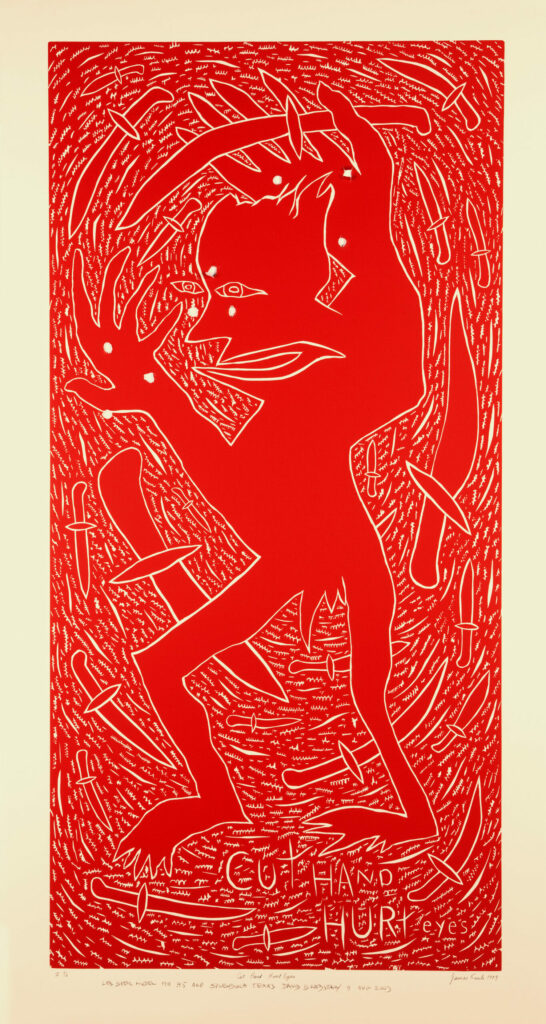
James Surls (born 1943, Texas) is a world-renowned modernist known for his striking sculptures, drawings, and prints. His style reflects his deep appreciation for nature and iconography, frequently referencing natural structures and human figures in his highly linear compositions. He started working with Flatbed in the early 90s and has returned several times throughout the years to create numerous iconic prints, including “Cut Hand, Hurt Eyes II”.
“Cut Hand, Hurt Eyes II” is a second edition woodblock print and depicts a bright crimson image of a life-sized anthropomorphic form surrounded by knives swirling around the figure. There are bullet holes penetrating the print, though they were not originally planned by the artist. Surls created the first edition in 1986. He had carved the block at Anderson Ranch in Colorado, where Master Printer, Chip Elwell was in residence. Elwell, took the block to his NYC studio to print an edition for Surls on Japanese Okawara paper using a hand burnishing technique. Unfortunately, Elwell passed away after printing seven Artist Proofs. After retaining the block, Surls had an edition of fifteen printed at Houston’s Fine Art Press.
Surls decided to make the second edition in 1999; he loved the original image but wanted to change the ink and paper used. To honor the value of the first edition, the new prints required several modifications, including clear documentation that this was an artist-approved second edition. Regardless of the precautions Flatbed and Surls took, a collector of the previous edition saw the new print in an exhibition and threatened to sue Surls unless he destroyed the new prints. Surls agreed but decided to do it in his own way. In 2003 he invited his friend and fellow artist David Bradshaw to fire nine 45-caliber bullets through the prints and the woodblock. Surls would call this event “The Execution”, which not only canceled the woodblock but also provided each print with a unique set of bullet holes. This satisfied the demands to “destroy” the prints while simultaneously creating distinctly feral artworks with a unique story.
Courtesy of Flatbed Press, Austin, Texas.
